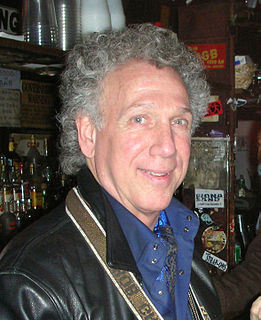
Edward Jean Steichen was a Luxembourgish American photographer, painter, and curator.

Timothy Greenfield-Sanders is an American documentary filmmaker and portrait photographer based in New York City. The majority of his work is shot in large format.

Charles Sheeler was an American painter and commercial photographer. He is recognized as one of the founders of American modernism, developing a "quasi-photographic" style of painting known as Precisionism and becoming one of the master photographers of the 20th century.
Guy Bourdin, was a French artist and fashion photographer known for his provocative images. From 1955, Bourdin worked mostly with Vogue as well as other publications including Harper's Bazaar. He shot ad campaigns for Chanel, Charles Jourdan, Pentax and Bloomingdale's.

Jill Furmanovsky is a British photographer who has specialised in documenting rock musicians.

Clemens Kalischer was an American photojournalist and art photographer. He was born in Germany and immigrated to the United States.

Max Vadukul is a British photographer who is based in New York City. He is noted for his art reportage photography, which he describes as “taking reality and making it into art.” He has a lifelong affinity with black and white photography, a foundation of much of his early work. From 1996 to 2000 Max was the staff photographer for The New Yorker, second after Richard Avedon and is the first Indian photographer to shoot covers for French and American Vogue.. Sting has described his photography as a sort of "On the move style". The National Geographic channel produced a feature documentary on Vadukul in 2000 about the improbable arc of his life after Africa; the documentary continues to air around South Asia today.

Bob Gruen is an American author and photographer known for his rock 'n' roll photographs. Gruen has also appeared in films.
Frank Stefanko is a fine art photographer with connections to New Jersey performers Patti Smith and Bruce Springsteen. Stefanko's early photographs, taken in the 1960s through the 1980s, reveal the emerging careers of the two young artists. Frank retains an ongoing working relationship with both Springsteen and Smith. A limited edition book was released in November 2017, entitled Bruce Springsteen: Further Up the Road. The book chronicles the 40-year working relationship between Stefanko and Bruce Springsteen. It contains personal stories and hundreds of Frank's photos from the 1960s to 2017, many never before seen.
Nina Berman is an American documentary photographer. She has published three monographs, Purple Hearts – Back from Iraq (2004), Homeland (2008) and An autobiography of Miss Wish (2017). Berman's prints have been exhibited in museums worldwide, received grants and awards, and she is a member of the NOOR photo agency and an associate professor at Columbia University.
Daniel Beltrá is a Spanish photographer and artist who makes work about human impact on the environment.
Norman Seeff is a photographer and filmmaker. Since moving to the United States in 1969, his work has been focused on the exploration of human creativity and the inner dynamics of the creative process.
Arthur Leipzig was an American photographer who specialized in street photography and was known for his photographs of New York City.
Ed Gallucci is an American photographer currently living in Virginia.
Laura Levine is an American multi-disciplinary visual artist. She is best known for her portraits of artists from the punk, early hip-hop, New Wave, No Wave, and the early downtown New York City music scene. Levine's work includes iconic images of Björk, R.E.M., the Clash, Afrika Bambaataa, the Ramones, the Beastie Boys, Iggy Pop, and Madonna, among others.

Nick Elliott is an English rock art photographer best known for his black and white images of some of the world's well-known musicians. Described as "one of the world's leading rock and music photographers" his work has been likened to Bob Gruen, Mick Rock, Henry Diltz, Jenny Lens and Anton Corbijn and his images have been featured on album artwork and in the media.

Who Shot Rock & Roll: The Film is a documentary film directed by Steven Kochones, which depicts the impact of photography on rock and roll history and culture over six decades. The film had its premiere in Los Angeles on June 23, 2012 in conjunction with the Annenberg Space for Photography's "Who Shot Rock & Roll" exhibit, and later shown at the 2013 Tribeca Film Festival.
Susana Raab is an American fine art and documentary photographer based in Washington, D.C. She was born in Lima, Peru.
Catherine Simon is an American portrait photographer and writer. She is known for her photographs of influential musicians, artists, and writers, including The Clash, Patti Smith, Madonna, Andy Warhol, and William S. Burroughs. One of her photographs of Bob Marley was used on the front cover of his 1978 album, Kaya.

David J. Zimmerman is an American photographer who works on long-term projects of social documentary and landscape photography. His works include landscape photographs in deserts of the American southwest, still life studies in communities of marginalized inhabitants in New Mexico, and portraits of Tibetan refugees living in India.










